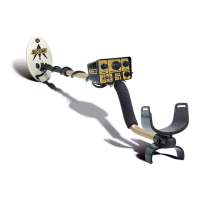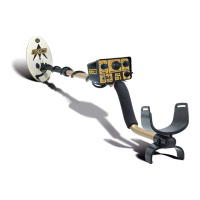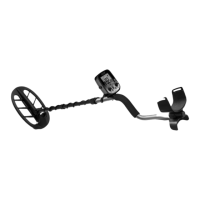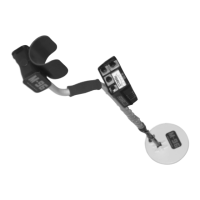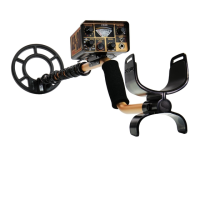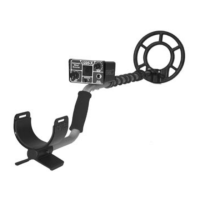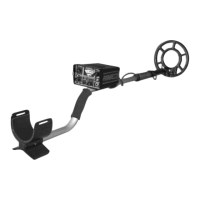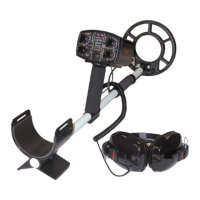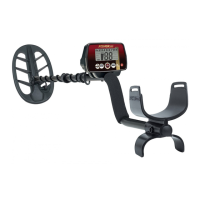13
MODE AND MINERALIZATION SWITCH SELECTION
IRON DISCRIMINATION MODE
Don’t search in the IRON DISC mode unless the area is heavily
littered with iron trash. This mode is better used by hunting in the
NORMAL or AUDIO BOOST modes and switching to the IRON DISC
mode only to identify a strong target response. Don’t trust the IRON
DISC mode to correctly I.D. weak target sounds. Targets already
dug can also be checked for their gold content by using the
IRON DISC mode. Swing the object past the search coil, holding
it in your ngers or in a plastic scoop. If it is a “hot rock” or small
ferrous object, there will be no sound. Some iron objects chirp or
click. If it is nonferrous metal such as gold, your Gold Bug-2 will
give a solid “beep.”
Unlike the AUDIO BOOST and NORMAL modes, the IRON DISC
mode is unaffected by the SENSITIVITY control and threshold
settings. Also, unlike the other modes, the IRON DISC mode
operates without an audible threshold hum.
NOTE: Some faint static and occasional chatter is
normal in this mode. If you are running your sensitivity
too high for ground conditions (heavy mineralization,
trash and or hot rocks) you may experience a
constant, loud chatter as you sweep.
AUDIO BOOST MODE
In this mode, weak signals are louder than in the NORMAL mode,
but maximum loudness of strong signals is the same. The primary
purpose of the AUDIO BOOST mode is to help you hear weak
signals when there is interfering noise from wind, mining equipment,
vehicles, etc. Also, if you prefer using the speaker (most people
use headphones), you may prefer the AUDIO BOOST mode even
in quiet conditions.
Hunting in the AUDIO BOOST mode is best when the area has
few trash items, hot rocks and low ground mineralization. In areas
with many false signals, the AUDIO BOOST mode will amplify them
as well as signals from gold nuggets. The AUDIO BOOST mode can
also be used to recheck a disappearing signal, or to check a faint
signal to see if it sounds like a hot rock in AUDIO BOOST.
20
TARGET RECOVERY
The moment of truth!
But not so fast . . . take your time. You may have pinpointed a
target, but that doesn’t mean you can reach down and pick up a
nugget. Even if it’s lying on top of the ground, you’re going to have
to determine which of those pebbles really is a gold nugget. And
if you have to dig for it, you’ll have to determine which handful of
dirt is pay dirt. But the worst part is that most of your targets won’t
be gold. They’ll be nails, bullets, junk, hot rocks, etc. The only way
to be absolutely sure is to dig them up.
1. Your objective is to recover your target neatly and
quickly, leaving virtually no trace of your excavation.
Repeat: No trace of your excavation. If you leave the
area looking like a battleeld, blame only yourself if
it’s been declared off limits to metal detectors when
you return.
target location with your nger or digging tool.
7. For very strong signals, you may improve your
pinpointing accuracy by adding one or more of the
following steps:
1) Lift the coil until the signal is just barely heard.
2) Lower the sensitivity level.
3) Rest the coil on the ground and move it back
and forth very slowly.
8. For very weak signals, try the following:
1) Switch to the AUDIO BOOST mode.
2) Move the coil closer to the ground.
3) Increase the sensitivity level. Recheck your
ground adjustment.
4) Speed up the sweep rate slightly.
PINPOINTING
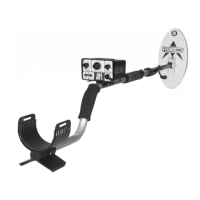
